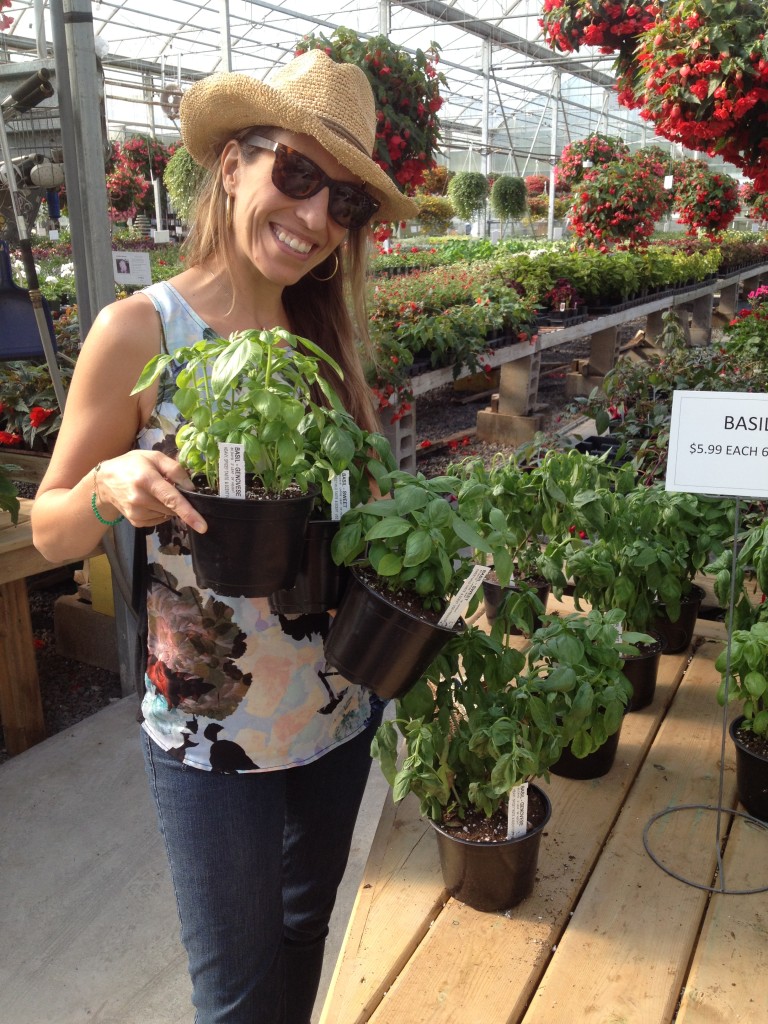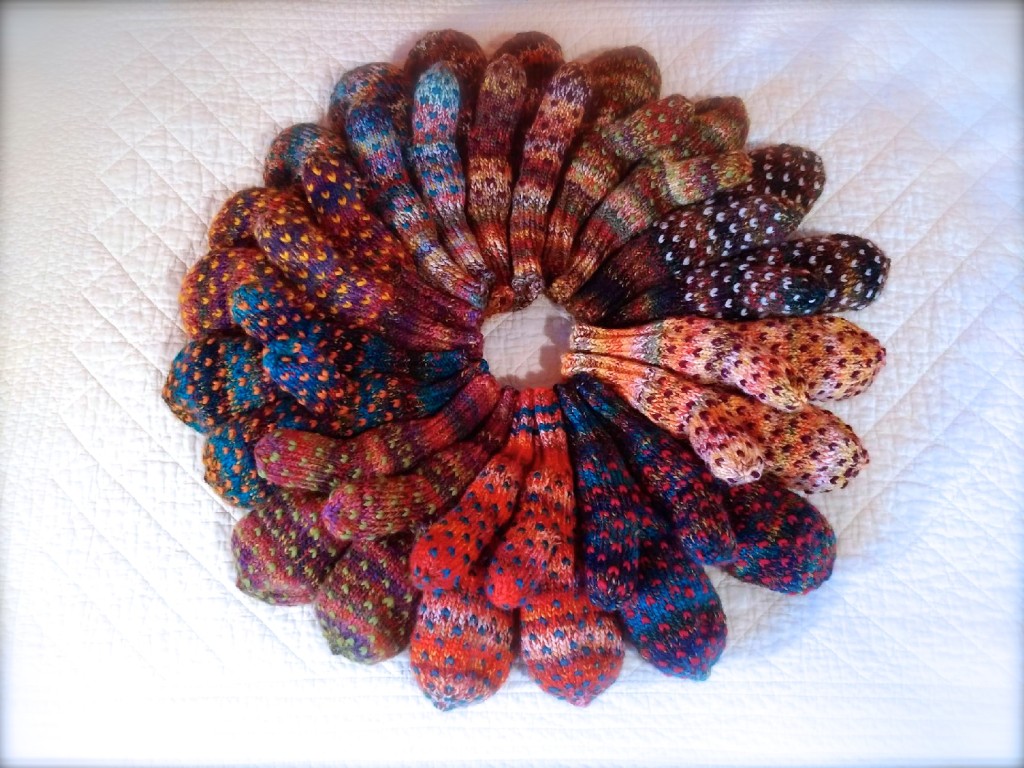How knitting made me a better writer.

I work really, really well with a routine.
And the thing about moving is that all of my routines have changed.
In our new house, where is my favourite reading spot? Where do my Mason jars live? Now that I have a bathtub (yay!) when is the best time for me relax and take a bath? Do I write at my desk first thing, or do I go to the cute bookstore/cafe across the street to write? Or wait! Now that I live near the woods, should I change all of my city habits, and go for a walk first, before anything else?
Spontaneous, fun-loving, go-with-the-flow people might not relate to my predicament. For me, having a plan is the fun and relaxation. Without a plan in place, how can I let go and enjoy life? Too much adventure is stressful!
This morning I spent an anxious forty-five minutes thinking (read: worrying) about what new habits would be best for my writing and workday, now that I have this new, simplified country life. Ha! I used a lot of valuable creative decision-making power before I even had my first cup of tea. I was thinking instead of writing.
I ended up going for a walk (always a good idea for me, especially when thinking) and on the way back home, ran into a friend. She'd also had a stressful morning, and made it worse by worrying about the stress.
We listened to each other, laughed at ourselves a little, and then made a promise to meet up later if we got "all of our work done." We would get a "prize" at the end of the day: a trip to the garden centre to buy herbs for our gardens.
Then I came home and read this piece by Susan Schrempf, about how knitting has given her more time for better writing. "I stopped knitting because I felt I should give that time to writing," she says. "Now I was thinking instead of writing."
Too often I feel guilty if I think I'm not writing enough. If I'm lucky, I can catch myself when I'm in the throes of over-thinking instead of writing. These processed thoughts run around my mind in circles: how to best manage my time, whether caffeine has anything to do with it, what new exercise plan will help, or … I try to give myself rest and pleasure as a reward for doing work.
I feel guilty if I think I'm not writing enough. If I'm lucky, I can catch myself when I'm in the throes of over-thinking instead of writing. These processed thoughts run around my mind in circles: how to best manage my time, whether caffeine has anything to do with it, what new exercise plan will help, or … I try to give myself rest and pleasure as a reward for doing work.
This is my mind trying to figure things out. It's on the wrong track, poor mind: the thing I really need is to stop figuring things out, of course! I need rest. But sometimes I go too far, and I can't catch myself. I need a reminder. Susan Schrempf's essay was the reminder I needed today. Even if you're not a knitter, you should read it. There's something to learn here about mental rest.
What if it is precisely the fuel you need to write?
Susan Schrempf is one of our wise and generous TAs for The Story Intensive this fall: six lucky students will be working with her for a full semester. Mark your calendar -- registration opens July 14th! And yes, you can request Susan as your TA: I do my very best to place students with their first choices.
With garden herbs and permission to breathe,

Meet Susan
 Susan was born in Minnesota and lived in Iowa (2x’s), Georgia, Kentucky and Ohio (2x’s) before immigrating to Canada at the age of 17. She is a graduate of Ryerson Polytechnical Institute’s School of Photographic Arts (‘83), and lives in Owen Sound, Ontario with her husband and Elliot, the dog left behind by their two adult daughters. Susan manages car-ferry services on the Great Lakes and the Moose River. Her most current writing project is a collection of interconnected stories in first-person monologues, as presented by travelers on a three-day train trip between Toronto and Vancouver.
Susan was born in Minnesota and lived in Iowa (2x’s), Georgia, Kentucky and Ohio (2x’s) before immigrating to Canada at the age of 17. She is a graduate of Ryerson Polytechnical Institute’s School of Photographic Arts (‘83), and lives in Owen Sound, Ontario with her husband and Elliot, the dog left behind by their two adult daughters. Susan manages car-ferry services on the Great Lakes and the Moose River. Her most current writing project is a collection of interconnected stories in first-person monologues, as presented by travelers on a three-day train trip between Toronto and Vancouver.
Handwriting or computer?
Handwriting. I treat my computer more like a typewriter than a word processor. After I transcribe my handwritten first draft into the computer and print the typed document, I mark it up, scratch things out, and add new paragraphs in the margins. My changes and additions are often more voluminous on the page than the original text. Then I re-type the entire story into the computer from scratch, and repeat as required until the story is complete.
Page count or time count?
Neither and both. My daily goal is to write no less than one decent sentence – it’s failure proof, and it usually leads to more sentences. It isn’t long before until I’ve written a couple of pages, have completely lost track of time, and am in danger of being late for work, or will have stayed up too late to bother going to bed.
First drafts or revision?
First drafts. Facing a blank page doesn’t scare me, not since I gave up believing I needed to start with THE beginning. Everything is a beginning, but not necessarily THE beginning. Now I love leaping off into a vacant space where anything is possible, and where being messy and rightly out of control are good things.
I’m not saying I don’t like revision – I resist revision, though I like it a lot once I get started. My resistance is attached to my fear of the invisible trip wire strung between revising and wringing the life out of a piece.
Writing solo, writing partner, or writing group?
Solo. While I don’t have a writing partner or group, I do have a few pretty brilliant people I can go to as first readers whose opinions I greatly respect, and whose time I will absolutely not waste.
Earplugs/quiet or headphones/music?
Solitude, which means I can deal with noise, but not interruption. Strangers rarely interrupt me, so writing in airports, cafes, or hotel lobbies has never been an issue. I suppose I can write anywhere, but I prefer places where I know there is little risk of being engaged in conversation.
Knitting My Way into Vacancy
In December 2014, I put down my pen and picked up my knitting needles.
I’d been a prolific knitter for most of my life until about four years ago. That was when I decided to stop thinking about improving my writing and started actually doing it. I enrolled in online creative writing courses, and committed most of my time outside of work to writing. I showed up. I did the work. When I wasn’t writing, I was feeling guilty about not writing. I stopped knitting because I felt I should give that time to writing, and I wanted to write more than I wanted to knit.
Writing is hard. I didn’t expect it to be easy, but still I knew something was getting in my way. I felt a familiar frustration with writing, one that I’d also experienced as a high-school basketball player. Brilliant in warm-ups and practice scrimmages, I could make every shot. But during actual games when it really mattered, I choked. I was overthinking how to make the shot instead of just shooting. My body knew what it needed to do, but my brain kept getting in its way.
Now I was thinking instead of writing. I couldn’t make my brain stop performing the task-processing and problem-solving it’s occupied with all day, every day, to just be silent. My husband recommended I try meditation. Not my cup of tea. I needed to be in motion, more specifically – my hands needed to be in motion.
By December, my stretch of bad writing days had persisted for so long that I needed an intervention to make it end. I’d known what it feels like when the writing is flowing and production is good. I didn’t want to give that up. I didn’t want to lose my ability to figure out what makes all of us do the weird things that we do, by writing about people I’ve never met, and putting them in circumstances I can only imagine. I bought new pens. It didn’t work. I decided to take a small break, easily rationalized by being ‘busy’ preparing for Christmas.
That’s when I picked up my knitting needles. After knitting for about twenty minutes, I realized that I had successfully knit myself into the very state of mind I need to write from, and now refer to as ‘mindful vacancy.’

I was pleased to learn that there is accepted sociological and scientific evidence in support of the theory that I can in fact, knit myself into mindful vacancy. Betsan Corkhill, a physiotherapist with the National Health Service in the United Kingdom, summarizes the mental health benefits offered by knitting in her recently self-published book Knit for Health & Wellness, a consolidation of recent research and her own experience within her physiotherapy practice. Ms. Corkhill asserts that knitting’s repetitive motion “promotes the release of calming serotonin,” and that “two-handed movement across the midline of our bodies is recognised as using a lot of brain capacity, leaving less room for other issues.” As well, the Washington Post, April 21, 2014, quotes Carrie Barron, assistant clinical professor of psychiatry at Columbia University and co-author of the book, The Creativity Cure: How to Build Happiness With Your Own Two Hands as saying, “The rhythmic movements of knitting offer many of the same kinds of benefits as meditation.”
Ever since that day in December when I put down my pen and picked up my needles, I’ve included my knitting ‘meditation’ as part of my writing practice. Every writing session begins with about thirty minutes of ‘mindful’ knitting – an unpretentious stocking knit stitch worked in the round, not complicated by cables or intarsia techniques. I’ve completed fifteen pairs of thrummed wool mittens in the last ninety days. I’ve also managed to generate a larger volume of higher quality writing than at any time prior to adding knitting to my writing routine.
If I follow the ten-year rule, that it takes 10,000 hours of practice to develop competency at any new skill, my writing practice is in year five. And based on my current production rate of one pair of mittens per week, or up to fifty-two pairs per year, I could potentially complete 260 pairs of mittens by year ten. Will I be a published writer by then? Maybe yes, maybe no, but I hope my writing will have improved, and that I’m still showing up and doing the work. If not, my youngest daughter has assured me that there is a global market for warm mittens, and she’s setting up an Etsy store to sell everything I’ve knit during my pursuit of ‘mindful vacancy’ – and better writing.
Tell us about the excerpt you're sharing today.
A tragicomedy about a marriage, “We Gave Her Everything” is a longer short story at 9000+ words and is about a couple’s want for a child, and how getting what they want begins their collective unravelling. The story begins at its end when the child is twenty-four, and weaves together two story lines: the action in the present, and the build-up of the family’s unravelling from past to present. When the two threads collide, the story ends at its beginning. This excerpt is from early in the couple’s pursuit of a child.
Excerpt from "We Gave Her Everything," by Susan Schrempf
After her second, third and fourth miscarriages, the Wife wonders if maybe she wants a baby too much, if her success at failure is a sign that she’s not ready, or worse, that she and her Husband will be incompetent parents and this is God’s way of protecting the innocent. Her Husband chides her for overthinking the process, for trying too hard with her thermometers and charts, for scheduling all the fun and spontaneity out of their sex life. He did his part, he said, impregnating her multiple times, and ‘on demand’ no less! It wasn’t his fault she couldn’t keep their bun in the oven. In his opinion, the problem was obvious: there must be something dark inside of her, incapable of harbouring life.
The Wife agrees to be tested first. A comprehensive and thoroughly invasive three-day investigation confirms her status as a fully functional baby-making machine, well suited to the physical requirements of pregnancy and childbirth, complete with a resplendent stockpile of healthy eggs stored in textbook perfect ovaries.
“Very pleasing, yes, yes, this is all very good,” exudes their excitable fertility specialist. All that’s required of her Husband is to produce and collect a shot glass volume of semen in a small, screw top plastic cup.
“Easier said than done,” he says, on his first trip to the privacy room.
“It’s a motility issue,” confirms the specialist, during their follow-up appointment the next week.
“A what?” asks the Husband.
“He means your sperm have no sense of direction,” says the Wife. She had read all the fertility literature in the clinic waiting room while the Husband flipped through institutional editions of last year’s Reader’s Digests, the kind with text large enough to be read from across the room.
“And a significantly high percentage are malformed,” adds the specialist. “If I may be frank? Your total viable sperm count is well below normal.”
“It’s what?” asks the Husband.
“No quality control,” says the Wife.
“This isn’t all bad news,” says the specialist. “Think of it in terms of the glass being half full.”
“No, I’m pretty sure I filled that cup to the rim,” insists the Husband.
“Not what he’s talking about,” says the Wife. “Let him finish.”
“Realistically, you’ve got a ninety-nine percent chance that the two of you will never conceive a child together, which means it’s not entirely impossible, but the odds are not in your favour,” says the specialist.
“Sounds to me like that glass is nowhere near half full,” says the Husband.
“We could do a few more investigations, check on structural issues and the like,” says the specialist. “It would be uncomfortable, and unlikely to produce a better outcome.”
“That’s it then?” asks the Wife.
“I’ve seen patients in similar circumstances who have persisted via natural means, and who went on to have successful pregnancies,” says the specialist. “But in your case, I recommend you consider donor sperm, or possibly even adoption.”
“And raise another man’s child?” asks the Husband. “That’s definitely not going to happen.”
“Go home and think about it,” says the specialist. “No one has to make any decisions today. In the meantime, think of all the fun you can have.”
“Fun?” asks the Mother. As if a limitless supply of unprotected Catholic sex will make up for the lack of a baby.
Note:These monthly spotlights showcase Mysterious Middle Drafts (MMDs). That means they are somewhere between first drafts and final drafts. This is a challenging stage! Emerging writers bravely share their work-in-progress here for discussion, but this is not a book review or critique: this is a venue for the appreciation of Mysterious Middle Drafts. Thank you for making this writing space safe and supportive.
Discussion:
-
What remains with you after reading Susan's work?
-
Can you articulate what’s working in this excerpt — and more importantly, why it’s working?
-
How is your own writing practice like Susan's? How is it different?
Please leave a comment below. And thank you, Susan!

11 comments
Leave a comment